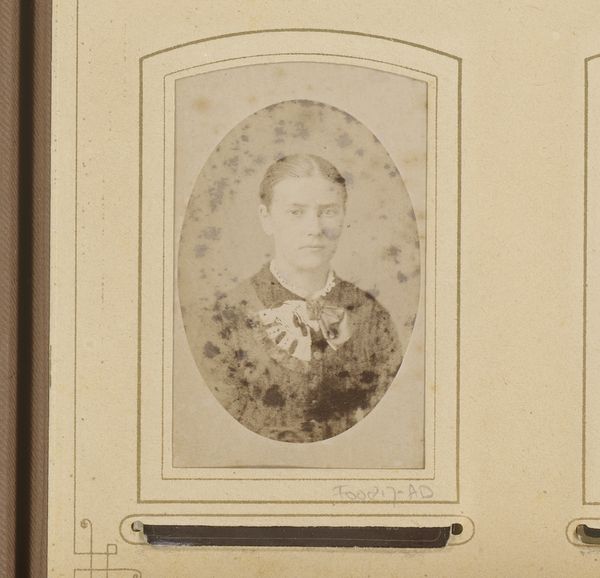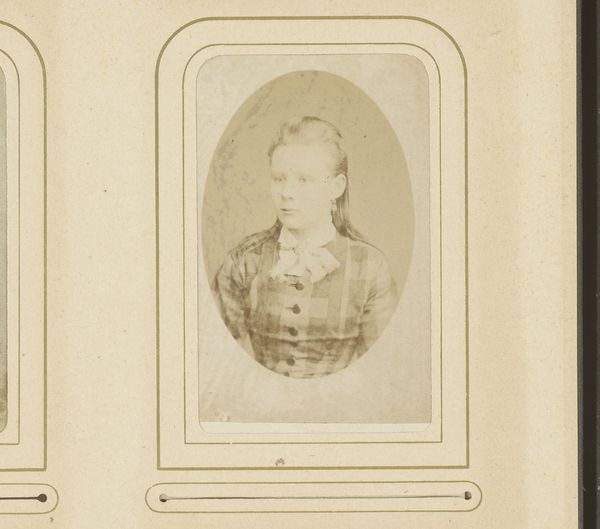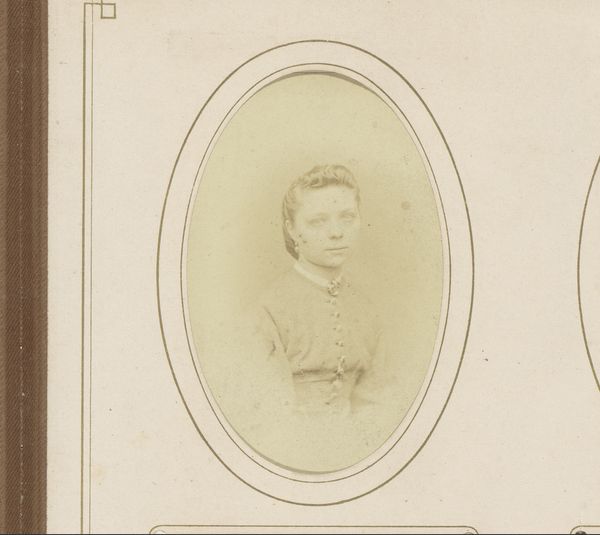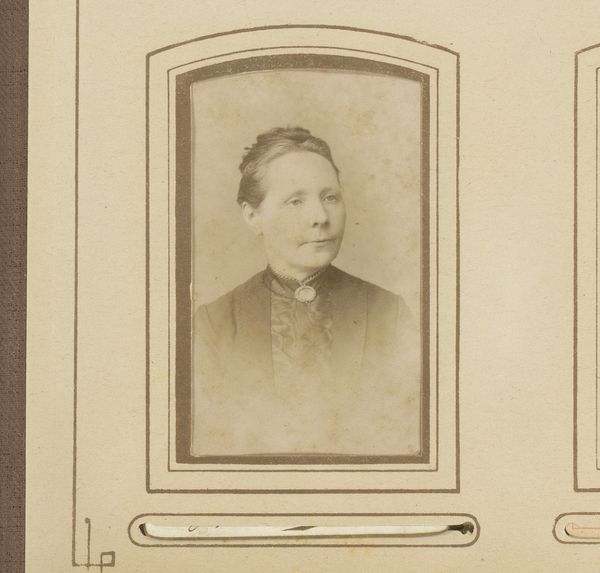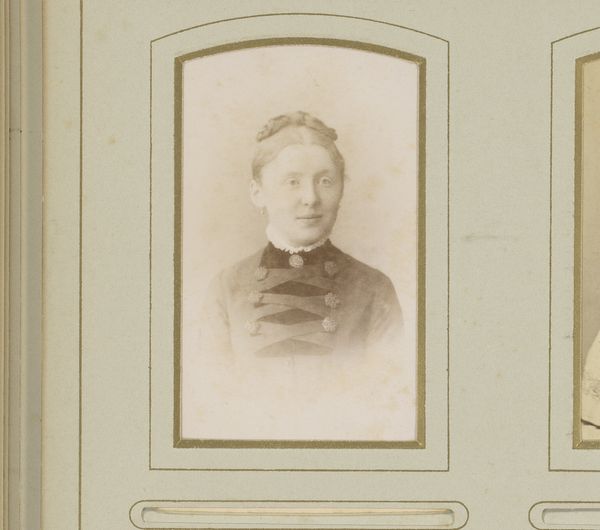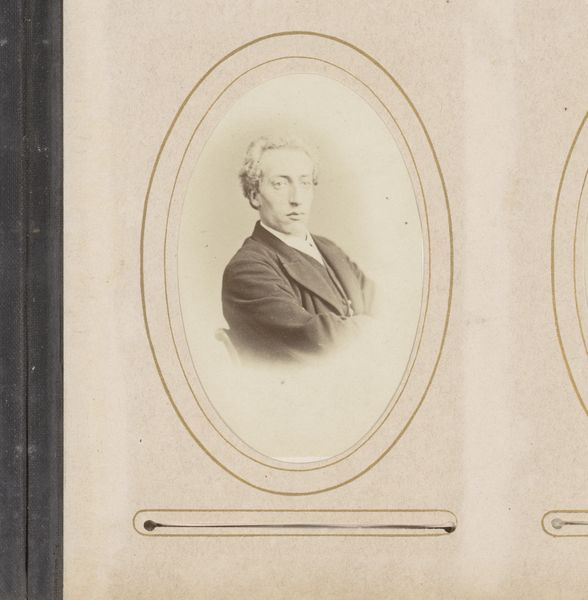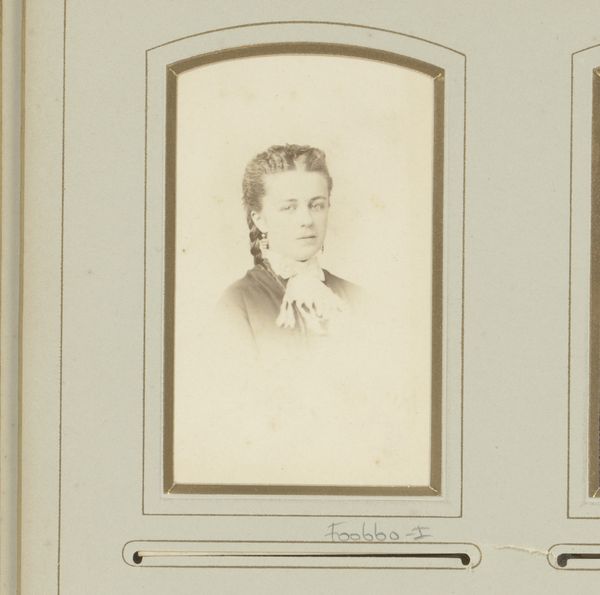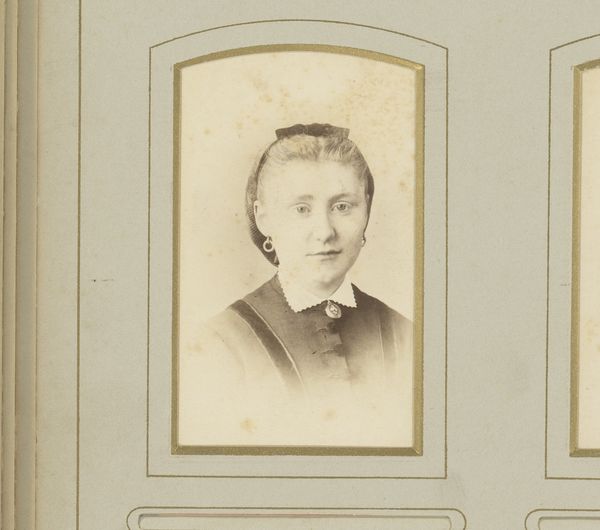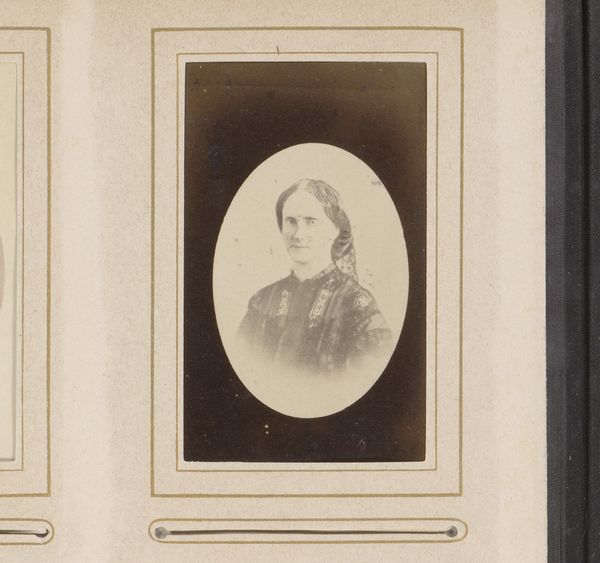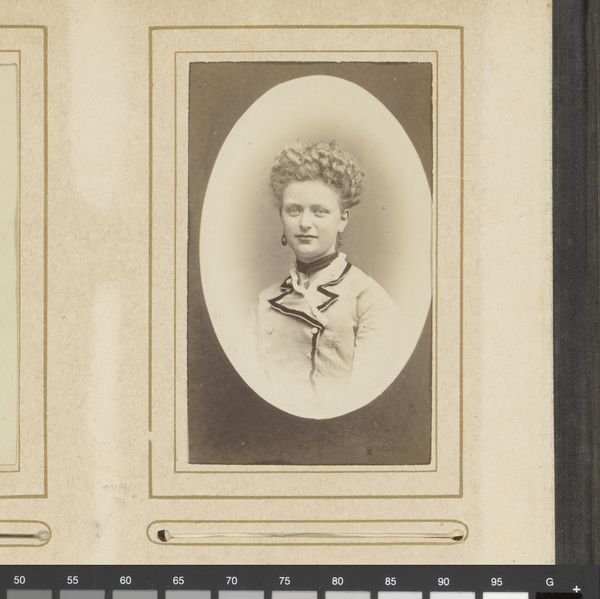
photography
#
portrait
#
aged paper
#
toned paper
#
muted colour palette
#
photography
Dimensions: height 84 mm, width 52 mm
Copyright: Rijks Museum: Open Domain
Curator: What strikes me first about this portrait is the subject's gaze. There’s a directness, a real presence, despite the distance of time. Editor: It does possess an interesting kind of stillness. I find the tonality so fascinating, like faded sepia, enhancing a melancholy air, almost reminiscent of an old daguerreotype. Tell me, what can you tell us about this photograph? Curator: Well, we believe this is “Portret van een meisje met oorbellen” or “Portrait of a girl with earrings” by Ed. Radermacher, produced sometime between 1863 and 1890. I'm immediately drawn to the process itself. The photographer would likely have used albumen prints or similar methods popular then. It was a burgeoning industry and, while technically advanced, incredibly labor-intensive. Editor: I’m drawn to the simplicity of the composition, though. The oval frame within a rectangular field, and the girl is positioned centrally. I think she contrasts the soft focus of the background. Note her adornments, a dark bow, and delicate earrings. How do you interpret these material aspects of adornment within a Victorian context? Curator: Considering Radermacher's access to models and materials is quite revealing. While some portrait studios were accessible, factors such as class and location always shaped one’s opportunities. Also, one can consider it was fairly common to show portraits on paper of a cream or ivory color. The quality and origin of those paper could definitely change the cost and the market which would get it. Editor: Yes, and within the composition, it is obvious that the lighting makes subtle details very evident. Curator: True. The soft gradations of light enhance both the fragility and directness of the girl, almost as if she were confronting mortality, in a way also confronts the technology that captures her. Editor: Indeed. Considering this, I find myself wanting to know more about who this person might have been. Curator: Exactly. Understanding the social fabric of production, reception, and dissemination is important for interpreting images and revealing power dynamics during a time of swift industrial shifts and evolving societal views. Editor: On my part, exploring these pieces through this analytical dialogue has helped me uncover multiple, subtle layers of meaning. Curator: I'm left reflecting on photography as more than just art, and this exploration shows how that medium and social commentary reflect labor and accessibility, too.
Comments
No comments
Be the first to comment and join the conversation on the ultimate creative platform.


